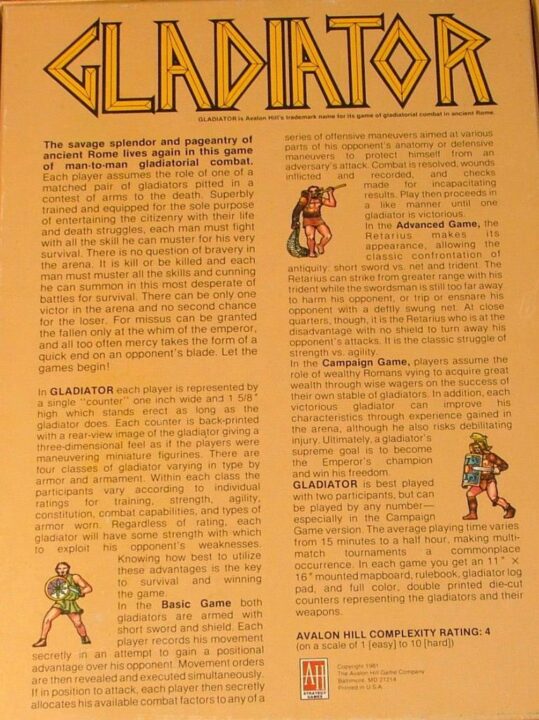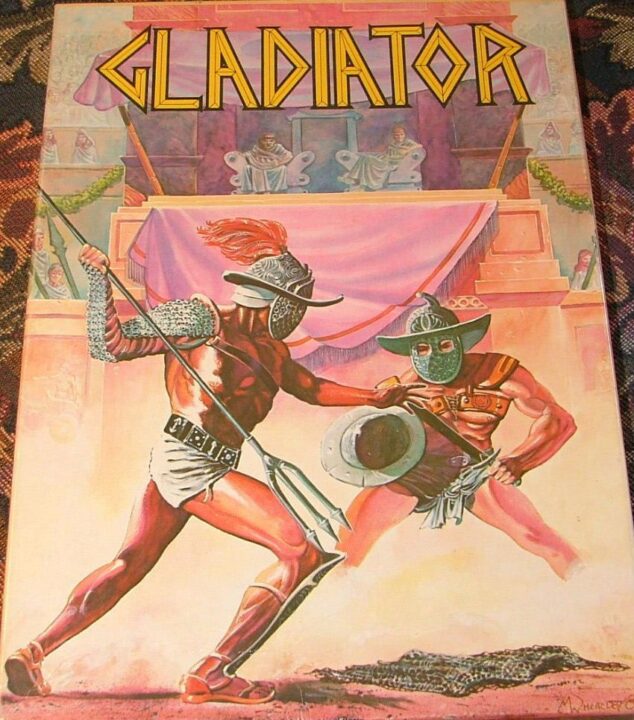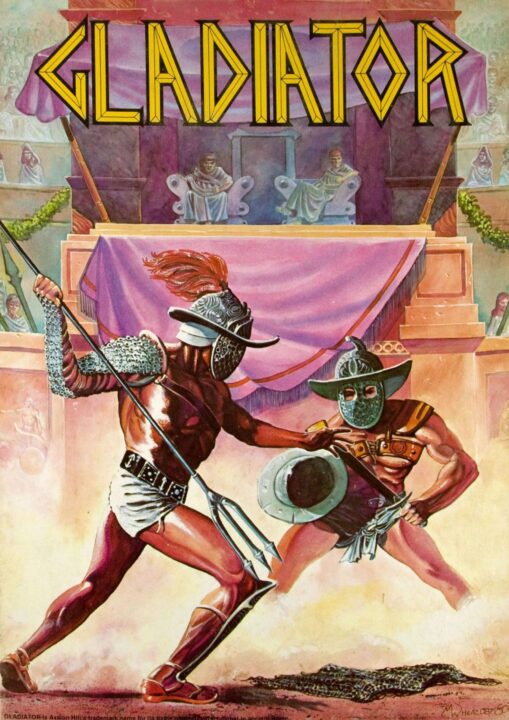Let me tell you, my friends and I have seen a lot of cardboard carnage over the years, but few games get the gladiator sand in your shoes quite like this one. In this review, I’ll share wild stories from our battles, the hard truths about fairness, and why some folks left game night with a new grudge. Ready? Pull up your favorite shield (or snack), and let’s see if this fight for glory is worth your coins!
How It Plays
Setting Up
Pick your gladiator, grab your cards and figure, then toss the board on the table. Give everybody their life tokens and starting gear. Set the arena with tokens and mix up the deck of action cards. Put snacks within reach, because this might get messy.
Gameplay
Each round, players take turns playing action cards, moving, attacking, and blocking. Plot your moves like a sneaky Roman, try not to get ganged up on (good luck), and don’t forget to heal if you can. The game’s all about smart moves, a bit of bluffing, and making your friends regret their decisions.
Winning the Game
The last gladiator standing wins, plain and simple. Knock out everybody else, and you get to gloat, wear an imaginary laurel crown, and maybe demand pizza as tribute.
Want to know more? Read our extensive strategy guide for Gladiator.
Game Balance and Fairness in Gladiator: Does the Arena Play Fair?
If you’ve ever been throttled by your best friend’s dice roll in a board game, you know why I care so much about balance. Well, when I set up Gladiator for a night of sweaty-palmed showdowns, I kept my eyes peeled for any hints of unfairness or sneaky, broken rules. Balance in a game means skill and clever planning matter more than dumb luck. And let me tell you, nothing’s worse than losing to the guy who only knows how to roll sixes!
So, is Gladiator fair and square? For the most part, yes! Each fighter starts at the same level. Everyone gets a shot at upgrading their gear and training their skills. If you lose, it’s rarely because the game decided you’re today’s loser. There’s some luck, sure – you do roll dice to attack – but if you make smart moves, you can still win even if the dice gods are watching TV instead of helping out. I saw players who planned ahead walk away with the crown, while the ones who started swinging from the get-go ended up on the sandy floor. The upgrades are also well priced, so no one can run away with the game just because they got lucky cash early on.
I did find one thing a bit annoying: Sometimes a player gets ganged up on, and that can tilt the game a little. It’s not a huge problem, but if your friends are ruthless (and mine are), you might want some house rules about pile-ons.
So, if you like games where brains matter more than luck, Gladiator should tick your boxes. Speaking of brains and brawn – next up, let’s talk about how players actually beat each other up! Prepare for mayhem in the combat system section…

Player Interaction and Combat System in Gladiator
One of the best things about playing Gladiator is how much everyone at the table gets involved. If you like games where you can mess with your friends (all in good fun, I promise), Gladiator delivers. Every turn lets you shout, argue, and try to cut secret deals. Last game night, my buddy Steve tried to convince everyone to attack me first because of my ‘resting evil face.’ Turns out my face isn’t the only thing that’s ruthless.
The combat system in Gladiator is wild. It lets you pick from flashy moves and sneaky tactics, not just the usual ‘roll a dice and hope.’ Instead, there are attack and defense cards, and you have to outguess your opponent. I felt like a real mastermind when I blocked Steve’s all-out attack and left him yelling, “That’s not fair!” I mean, in Gladiator, if you play smart, you can outmaneuver just about anyone. The best (and worst) part? You have to read the table, because if players sense you’re winning, they might all pile on you. Sneaky backstabbing is practically a sport.
There’s no sitting around while someone else takes their turn, either. Even when you aren’t fighting, you’re scheming, watching alliances shift, and plotting your revenge. If you enjoy jawing with friends and pretending you’re the star of a Roman soap opera, you’ll be hooked on Gladiator’s player interaction and combat.
Next up, we’ll see if this game still feels fresh after a few rounds—and if deeply clever strategies win the day, or if my victory was just a fluke!

Replay Value and Strategic Depth in Gladiator
If you’re like me and your friends—who still bring up the grudge match from our first game of Gladiator—then you’re probably wondering if this game gets old fast. Don’t worry, Gladiator has solid replay value that keeps the energy alive over many sessions. The shifting alliances and player-driven power shifts mean each play-through tells a different story. You’ll never have the same faceoff twice, unless you have that one friend who always tries the same trick (I’m looking at you, Dave).
Now, let’s talk about strategy depth. Gladiator isn’t just about smashing and bashing your way to victory—although, I won’t lie, those moments are hilarious. Victory comes from reading your opponents, timing your moves, and sometimes, bluffing your way out of trouble. There’s always a real push and pull between taking big risks and playing it safe. Will you go for glory with a bold move, or hang back and wait for someone else to slip up? The game rewards clever planning and adaptability, which means there’s always room to try new things. Even after several plays, my group keeps coming up with new sneaky tactics, and the table talk is half the fun!
One minor downside: if you always play with the same folks, the meta can get a bit predictable, and some players may try to gang up on the current champ. But that’s just part of the fun and keeps everyone on their toes.
And now, let me tell you about Gladiator’s component quality and artwork—a feast for the eyes, or just cardboard calories?
Component Quality and Artwork in Gladiator: Does It Bring the Arena to Life?
Alright, time to talk nuts and bolts. Or, in this case, swords and sandals. When I first cracked open Gladiator, I was more excited than an emperor at the Colosseum. The box gives off serious weight, and that’s usually a good omen—unless it’s just full of sand, which thankfully it wasn’t.
The miniatures in Gladiator are frankly pretty awesome. My friend Steve named his ‘Stabby Jeff’ and insists on narrating every gruesome detail, so trust me, we gave these figures a real flex test. The attention to detail will not win any fine art prizes, but they’re chunky, stand up straight, and don’t feel like they’ll break if you get a bit too enthusiastic after a win (or loss, if you’re Steve).
The cards are sturdy, shuffling them won’t turn them into mush, which is a blessing if you play with people who eat potato chips at the table (again, Steve). Artwork-wise, Gladiator is bold and colorful, but don’t expect renaissance-level portraits. The visuals do enough to set the mood—which is basically “get in there and smack something.” The arena board looks impressive on the table and draws in curious bystanders. Just warn them: there will be yelling.
Is Gladiator a must for the display shelf? For players who love a bit of flair and tactile joy, absolutely. But if you’re after luxury, hand-painted pieces, maybe keep that wallet tucked in. For fun game nights with friends, though, I recommend it—just don’t let Steve bring snacks.
Conclusion
Gladiator brings out the best and worst in my friends. We all love the wild fights, the careful planning, and the tense table talk. Sure, sometimes folks gang up on you, and yeah, luck sneaks in here and there, but skill usually wins out. The components are sturdy, the artwork is fun, and every match gives us stories to retell next time. If you like fair fights and don’t mind the odd bit of chaos, Gladiator is a blast for game night. That wraps up my review—now go win some glory (or at least don’t get eliminated first)!


